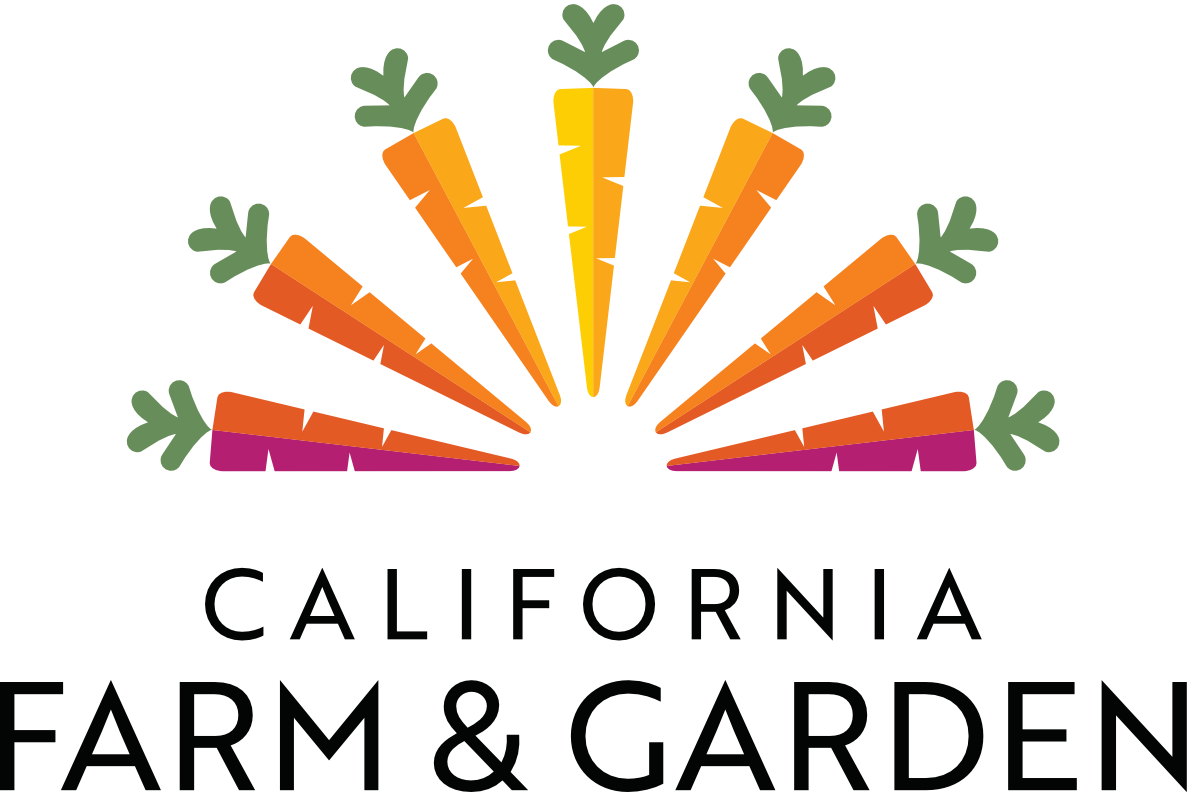Irrigating Gardens vs Lawns
“Water is integral…”
“…to maintaining the San Diego lifestyle. Together, we must value water, use it more wisely and never waste it.” – Halla Razak, Director of Public Utilities of San Diego
According to the Public Policy Institute of California, 2014 – 2016 was the driest three-year stretch in the last 120 years of record keeping, and in 2021 88.6% of California has once again found itself in “Extreme Drought.” One of the largest targets in California has been painted on the backs of homeowners with lawns – and thus, the mad dash for water conscious grass alternatives has begun.
California Farm and Garden has received many questions, both from prospective and current clients, about the viability and sustainability of edible gardens as a water conscious alternative to turf. Our research shows that a fruit and vegetable garden in the same space as a lawn will not only conserve water, but reduce water usage by about 75%!
How much water does a lawn use?
The rule of thumb is lawns require an average of 1” of water per week in dry conditions. This converts to .623 gallons per square foot.
The EPA states that 50% of outdoor water is wasted, which really takes this number to 1.246 gallons per square foot.
.623 gallons per square foot x 50% inefficiency = 1.246 gallons per square foot
For simplicity’s sake, let’s look at a lawn that is 1,000 square feet. Using 1.246 gallons per square foot, a 1,000 square foot lawn uses 1,246 gallons per week or 64,792 gallons per year.
1,000 square feet x 1.246 gallons per square foot per week = 1,246 gallons per week
1,246 gallons per week x 52 weeks = 64,792 gallons per year
How much water does a fruit and vegetable garden use?
Now let’s examine our favorite alternative: edible gardens! First and foremost, a fruit and vegetable garden naturally takes up less space than turf, whether raised or in-ground beds, because of accessibility paths. If these gardens were planted in the same space as above, 1,000 square feet, the plantable space would actually only average about 44%, or 440 square feet, of that space (we’re giving each 10’x4’ bed an average 3’ cushion suitable for walking and/or a wheelbarrow).
One Average Bed: 10 feet x 4 feet = 40 square feet
Three Foot Accessibility Cushion: 13 feet x 7 feet = 91 square feet
40 square feet / 91 square feet = 44%
This means you’re already saving water, even if the rest of the numbers were the same… but they’re not!
Drip and micro sprayers, which is what California Farm and Garden uses in edible gardens, can be nearly 100% efficient according to the Alliance for Water Efficiency. Combined with other water saving techniques possible in controlled garden beds that are not possible with grass, this is a realistic number.
For argument’s sake, we’ll take it down to 85% efficiency. This means for that 1” of water, it would require .716 gallons per square foot.
.623 gallons per square foot x 15% inefficiency = .716 gallons per square foot
This equates to 315.04 gallons per week or 16,382.08 gallons per year.
440 square feet x .716 gallons per square foot per week = 315.04 gallons per week
315.04 gallons per week x 52 weeks = 16,382.08 gallons per year
Water Consumption and Saving:
How much water are you saving? A fruit and vegetable garden uses roughly 75% less water than grass! For that 1,000 square foot yard, the edible garden would conserve 32,238 gallons of water per year.
1 – (16,382 / 64,792) = 75% less water
64,792 – 16,382 = 48,410 gallons less
Check out the graph below (even if you’re not in San Diego County) to see how your yard would stack up!
* 1 Month = 4.3 Weeks
^ 1 “hundred cubic feet” (HCF)
National average lawn size is ⅕ acre, or 8,712 square feet.
In The Real World
How accurate are these calculations in the real world? We took averages from three California Farm and Garden farms using drip and micro irrigation and crunched some numbers using a different approach.
Typically we install micro sprayers in raised beds. Using the actual number of sprayers we have per bed, and the time each bed is irrigated per week, the results are astounding. Our California Farm and Garden farms average .720 gallons per square foot per week. Recalling the example above, we estimated a raised bed uses .716 gallons per square foot – a difference of only .004 gallons per square foot.
These numbers actually get better for our in-ground beds using emitters on drip tape, which we’ve discovered only use about .528 gallons per square foot per week!
It is clear, both with general examples and actual farm data, that irrigation systems used in fruit and vegetable gardens vastly outperform water used by lawns. Each garden is completely unique, however.
While the average water conservation of an edible garden over turf may hover around 75%, climate, soil type, lawn varieties, fruit and vegetable varieties, insects and diseases, techniques, and more can all affect how much water your yard needs and uses.

